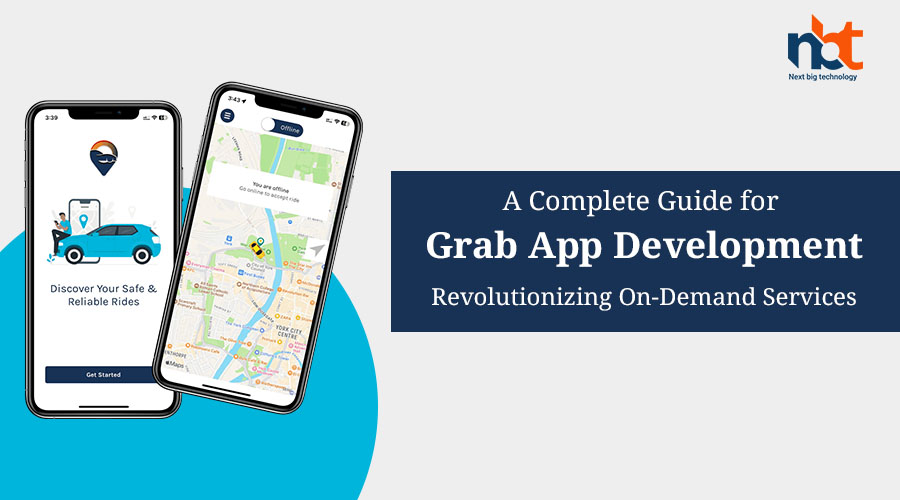Introduction:
Grab, a leading on-demand services platform in Southeast Asia, has transformed the way people commute, order food, and access various services. The Grab app offers a wide range of features, including ride-hailing, food delivery, parcel delivery, and more. If you’re interested in developing your own on-demand services app like Grab, this comprehensive guide is for you. In this guide, we will explore the key features of the Grab app, the technology stack required, and the step-by-step process to develop a Grab-like app. Let’s embark on this journey and revolutionize the on-demand services industry!
I. Understanding Grab App Development:
- Overview of Grab:
- Grab is a multi-service platform that provides ride-hailing, food delivery, parcel delivery, payment solutions, and other on-demand services across Southeast Asia. The Grab app connects users with service providers, offering convenience and seamless experiences.
- Key Features of the Grab App:
- Ride-Hailing: Grab offers a reliable ride-hailing service, allowing users to book a car or motorcycle for transportation.
- Food Delivery: Users can order food from a wide range of restaurants and have it delivered to their doorstep.
- Parcel Delivery: Grab provides a parcel delivery service, enabling users to send packages conveniently and securely.
- Payment Solutions: The Grab app supports various payment options, including cash, credit/debit cards, and GrabPay digital wallet.
- Safety Features: Grab prioritizes user safety by implementing features such as real-time GPS tracking, driver ratings, and in-app emergency assistance.
- Loyalty Rewards: Grab offers a loyalty program where users earn points for each transaction and can redeem them for discounts or special privileges.
- In-App Messaging: The app facilitates communication between users and service providers through an integrated messaging feature.
II. Technology Stack for Grab App Development:
- Front-End Development:
- Native iOS Development: Swift programming language, Xcode IDE, UIKit framework.
- Native Android Development: Java or Kotlin programming language, Android Studio IDE, Android SDK.
- Back-End Development:
- Server-Side Language: Java or Kotlin for server-side development.
- Web Framework: Spring Boot, Express.js, or similar frameworks.
- Database: PostgreSQL, MySQL, or MongoDB for data storage.
- Cloud Services: Amazon Web Services (AWS), Google Cloud Platform (GCP), or Microsoft Azure for hosting and scalability.
- APIs and Integrations:
- Location-Based Services: Integration with geolocation services like Google Maps or Mapbox for accurate location tracking and mapping.
- Payment Gateway Integration: Integration with secure payment gateways such as Stripe or PayPal for seamless transactions.
- SMS Gateway Integration: Integration with SMS gateways for sending order confirmations, delivery updates, and verification codes.
- Push Notification Services: Integration with platforms like Firebase Cloud Messaging or Apple Push Notification Service for sending real-time notifications to users.
III. Steps to Develop a Grab-Like App:
- Define Your App’s Objectives:
- Determine the primary goals and target audience for your on-demand services app. Identify the unique features or differentiating factors that will set your app apart from Grab.
- UI/UX Design:
- Create wireframes and design mockups for your app’s user interface and user experience. Focus on intuitive navigation, visually appealing layouts, and seamless interactions.
- Front-End Development:
- Develop the front-end of your app using the chosen technology stack. Implement core features such as ride-hailing, food ordering, parcel delivery, and payment options.
- Back-End Development:
- Set up the server-side infrastructure using the chosen programming language and web framework. Implement the necessary APIs and services for user authentication, service matching, and order management.
- Location Tracking and Mapping:
- Integrate geolocation services to enable accurate tracking of service providers and display maps for user convenience.
- Payment Integration:
- Integrate secure payment gateways to enable users to make seamless transactions within the app. Ensure compliance with industry standards for data security.
- Safety and Security Features:
- Implement safety features such as driver ratings, in-app emergency assistance, and user verification mechanisms to ensure user trust and security.
- Loyalty Rewards and Gamification:
- Design and implement a loyalty program that incentivizes users and encourages repeat usage through rewards, discounts, and special privileges.
- Testing and Quality Assurance:
- Conduct comprehensive testing to ensure the app’s functionality, performance, and user experience. Test on various devices, screen sizes, and operating systems to ensure compatibility.
- Deployment and Launch:
- Deploy your app to the respective app stores (App Store and Google Play Store) and make it available for users to download and install. Promote your app through digital marketing channels and leverage social media platforms to reach your target audience.
IV. Conclusion:
Developing an on-demand services app like Grab requires careful planning, design, and implementation. By following the steps outlined in this guide and leveraging the appropriate technology stack, you can create a powerful and user-friendly app that revolutionizes the way people access services. Remember to focus on user-centric design, seamless service booking and delivery, secure payment processing, and efficient communication channels to provide a delightful on-demand services experience. Embrace the power of Grab app development and create a platform that connects users with their desired services, enhancing convenience and improving lives.










